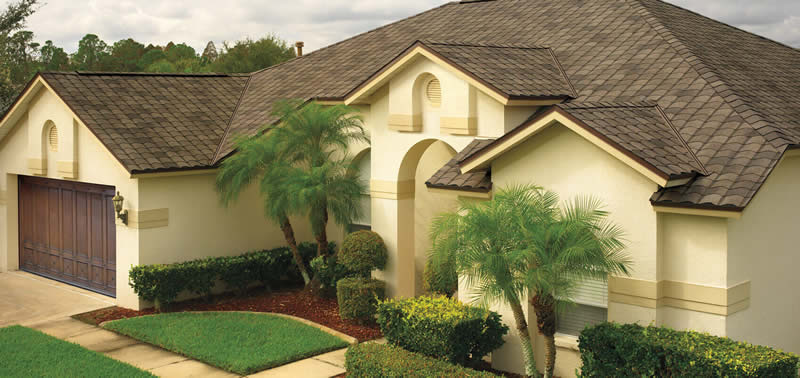
ROOFING TYPES & EDUCATION
Types of Roofs
Low slope roofs are most often found on commercial buildings and occasionally on older residential buildings or on things like porch extensions and added garage shelters. The technical definition is that a low slope roof has a drop of less than 4-inches per foot. That means this roof will drain water very slowly and it is therefore not advisable to use asphalt shingles on low slope roofs. The most typical roofing materials are Built Up Roofing, Modified Bitumin Systems, and EPDM which is a membrane system. The average life span of a properly installed system can be as long as 20-years. Poor installation will sharply reduce the life of these roof systems.
Steep slope roofs are most often found on residential homes and have a slope of 4-12 inches per foot and are considered very appropriate for use of asphalt shingles, tile, and slate roofing products. These roofing systems, when properly installed, can have a life span of 30+ years.
Roof Components
- Decking: This is the wood sheathing that is mounted onto the rafters which support the roof. The decking requires a specific nail pattern by Florida code to minimize the possibility of roof failure during a severe weather event. This pattern must be properly installed when the roof is replaced. Any decking that has become damaged by moisture needs to be replaced before a new roof is installed.
- Underlayment: This is a water barrier that is rolled over the top of the decking before installing the roof shingles. This water barrier is very important for protecting the decking.
- Drip Edge: This is a piece of metal that is “L” shaped with a slight lip on one end and is installed at the very edge of the roof. It serves to divert water away from the fascia board of the eave to prevent rot. It also serves as a surface to support the very edge of the shingles.
- Starter Shingles: These shingles are called “starter” because they are installed under the first row of roof shingles at the edge of all of the eaves. These shingles serve to hold down the edge of the roof and minimize damage caused by wind gusts.
- Flashing: This is a roll of material that is often called peel and stick or ice and water shield. It is waterproof and is installed wherever two decking surfaces meet (called valleys) and around any penetration in the roof deck such as a chimney, skylight, or a dormer.
- Plumbing Boots: These boots are made of synthetic neoprene or lead and fit around the plumbing vent pipes (stacks) to prevent intrusion of water in these areas. The synthetic boots are the cheapest but are also prone to rapid deterioration and splitting.
- Shingles: These are asphalt-based, fiberglass mats that are the outer layer of the roof and are the primary protection for the roof and the contents of the home. These shingles come with 20-year, 30-year, and lifetime warranties depending on the thickness. The least expensive shingle is the “Three Tab Shingle” which is often the builder grade for new homes. The thicker shingles are known as “Architectural or High Definition” and provide a more upscale final product that can provide the best protection for the home and its contents.
- Attic Ventilation: The ability for air to move through the attic and reduce the heat buildup is extremely important. This facilitates moisture control and reduces the cooling requirements for the home during warmer months. It also extends the life of the shingles by preventing curling of the shingles edges among other things. Proper ventilation of vents along the eave and vents along the very top of the roof called “Ridge Vents”. The proper installation of these along with the proper amount of attic insulation enhances the useful lifetime of the roof as well as lowering utility costs.